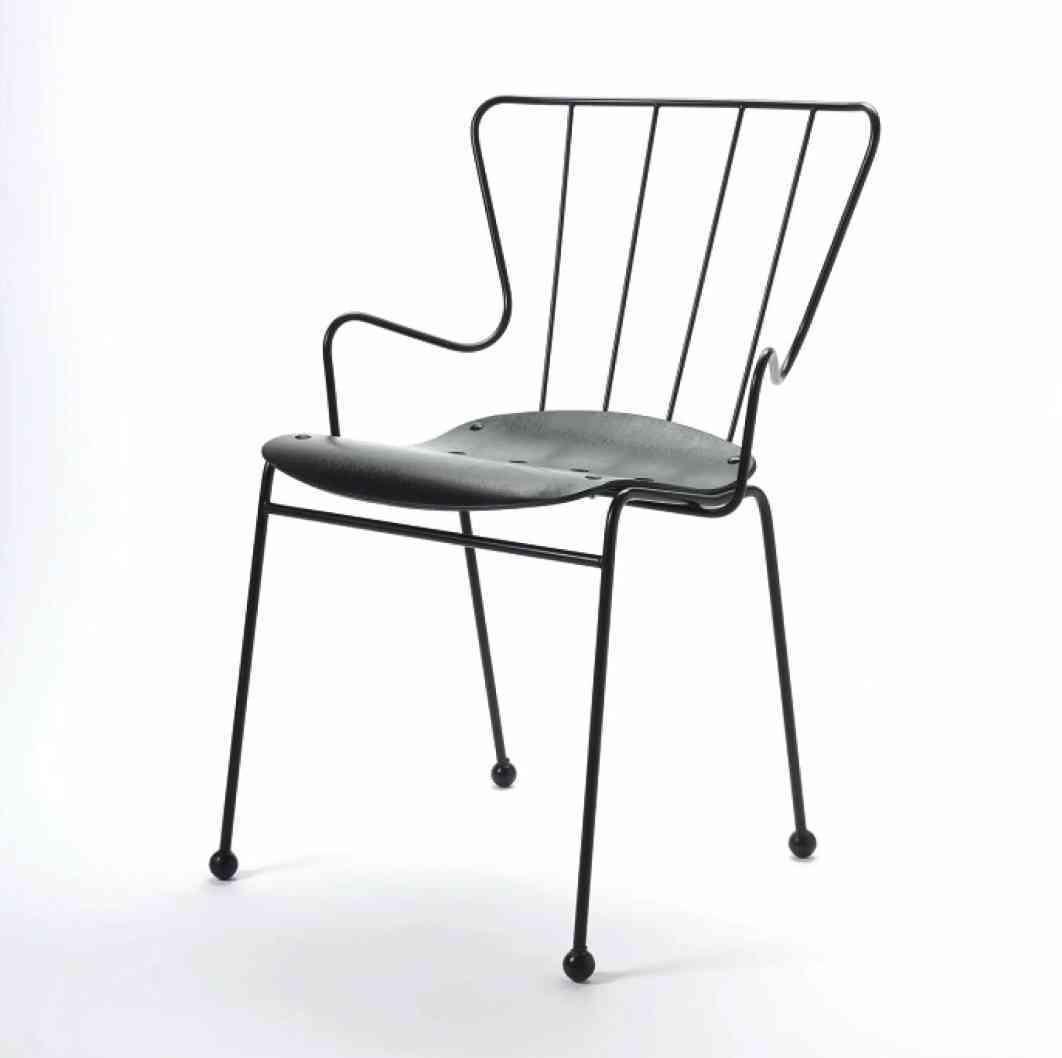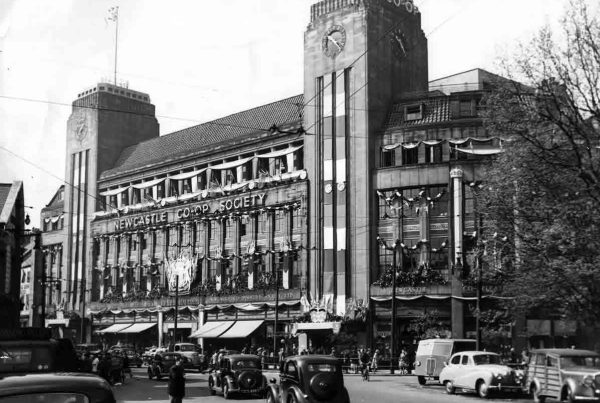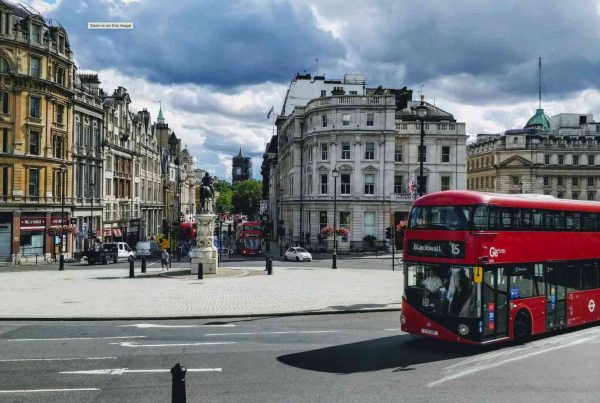Ernest Race is a name that resonates with reverence and admiration in the annals of British design history. Born and bred in the vibrant city of Newcastle upon Tyne in 1913, he ascended to become one of the United Kingdom’s most illustrious furniture designers.
His indelible influence on mid-century modern aesthetics cements his legacy, and for those in search of a Newcastle interior designer with a profound grasp of historical design legacies, Race’s journey from a Newcastle native to a globally renowned designer offers an enduring narrative of inspiration.
The saga of Ernest Race is not merely the chronicle of an individual’s rise to prominence; it is a testament to the spirit of British design, encapsulating an era of transformative change and enduring innovation. His designs, which have stood the test of time, continue to cast a long shadow over contemporary interior design Newcastle, providing a wellspring of influence and a point of reference for modern design aesthetics. For interior designers in Newcastle, Race’s legacy is a beacon, guiding the way in an ever-evolving design landscape.
Newcastle Beginnings: The Formative Years of a Design Prodigy
Born into the industrial tapestry of Newcastle upon Tyne, Ernest Race was cradled in a milieu ripe with design potential. The architectural vernacular of Newcastle, with its distinctive Georgian façades and utilitarian industrial structures, provided young Race with a visual lexicon from which his own design sensibilities would later flourish. The city’s vibrant design scene, burgeoning during Race’s formative years, was a crucible of creativity that undoubtedly left its mark on the budding designer.
In the early 20th century, Newcastle was a city pulsating with a design ethos that married the utilitarian with the aesthetic. The city’s own legacy of design innovation served as a fertile ground for Race’s nascent talents. This was a period when Newcastle’s shipyards were creating marvels of engineering, and this spirit of innovation was mirrored in the city’s approach to design and architecture. Race’s design odyssey commenced in this dynamic Newcastle environment, where the ethos of design was not confined to high art but was instead woven into the fabric of everyday life. The young Ernest was not only a witness to this but an active participant, absorbing the values of design that would later become the cornerstone of his own design philosophy. His early life in Newcastle laid the groundwork for a journey that would see him leave an indelible mark on the design world.
The educational path of Ernest Race was one that interwove the artistic with the technical, setting the stage for a career that would blend aesthetic beauty with functional design. His formative years in Newcastle’s schools, followed by his specialised education in design, were instrumental in honing his skills. Race’s time at Newcastle City and Regional College laid a robust foundation, which was further refined during his time at the London-based Royal College of Art.
Race’s educational journey was a pivotal phase where his dual passion for art and engineering began to take shape. This was a period of exploration and growth, where the young designer’s interest in design began to crystallize. The curriculum at these institutions was rigorous and forward-thinking, providing Race with a comprehensive understanding of design that would inform his later work. His early education in Newcastle was particularly significant, as it rooted him in the design principles that were part of the city’s rich cultural heritage. The professional genesis of Ernest Race’s storied career was marked by a serendipitous encounter with a newspaper ad, a simple yet fateful moment that would set the trajectory for his future success. This chance discovery, which led to his entry into the design world, was the first in a series of fortuitous events that would define his career.
The inception of Ernest Race’s professional journey is a narrative punctuated by a series of serendipitous events, each more fortunate than the last, that propelled him from an inquisitive newcomer to a doyen of design. This journey, which began with a seemingly innocuous newspaper advertisement, unfolded as a series of fortunate turns that would see Ernest Race become a colossus in the world of design. The year 1937 marked the beginning of a new chapter for the young Ernest Race, as he embarked on his design career at the venerable Baxter Brothers. This initial foray into the world of design was to be the catalyst for a series of events that would culminate in Race’s ascent to the pinnacle of the design world.
The design industry during Race’s early career was a crucible of creativity and innovation, and Ernest himself was an eager acolyte within this vibrant milieu. The late 1930s were a time of burgeoning design philosophy, where the emphasis was on functionalism and a break from the past. Ernest Race, with his unique blend of artistic flair and technical acumen, was perfectly poised to make his mark in this exciting industry.
In the throes of a burgeoning design industry, the year 1937 saw the rise of Ernest Race’s design studio, a venture that would become emblematic of innovation and excellence in design. This foray into entrepreneurship was not just a business decision but a reflection of the zeitgeist of the era, which celebrated creativity and individuality in design.
Ernest Race’s Timeless Design Philosophy
The design philosophy of Ernest Race was as distinctive as it was influential, characterised by a deep respect for materials and an affinity for geometric forms. Race’s work exuded a sense of functional simplicity and elegance, a testament to his belief that furniture should not just serve a purpose but do so with grace and integrity. His approach to design was informed by a modernist ethos, one that sought to harmonise form and function in a way that was both practical and aesthetically pleasing.
Race’s design ethos was shaped by a number of defining characteristics that set his work apart from that of his contemporaries. One such characteristic was his penchant for utilising new materials and techniques. This forward-thinking approach allowed Race to experiment with forms and structures that were unconventional for the time, resulting in furniture that was not only innovative but also accessible to the masses.
The modernist principles that Race espoused were reflected in every facet of his design work. His designs were marked by a clear utilitarian purpose, an aesthetic rooted in the inherent beauty of the materials he used, and a bold confidence in form-making. These principles were not just theoretical tenets but were the driving forces behind the creation of some of the most iconic pieces of mid-century furniture.
Ernest Race’s design narrative was one of continuous innovation and exploration. His early career was marked by a series of successful designs that set the stage for his later, more iconic works. It was a period of experimentation and growth, where the foundations of his design philosophy were laid and where his unique vision for modern furniture began to take shape. Race’s journey through the design world saw him traverse a landscape where materials were not just components but inspirations. His designs often reflected a deep understanding and respect for the materials he worked with, whether it was the sleek lines of metal, the warmth of wood, or the versatility of plastics. The furniture designed by Ernest Race were not just objects of utility but also reflections of his own design values. His chairs, in particular, became icons of mid-century modern design, embodying his philosophy of honest, straightforward design that prioritised both form and function.
One of the most notable contributions of Ernest Race to the world of design was his pioneering use of plastics in furniture making. His exploration of this material marked a significant shift in the industry, as plastics offered a versatility and durability that were previously unattainable with traditional materials. Race’s foray into the world of plastic furniture design was not just a testament to his innovative spirit but also to his ability to see the potential in materials that were considered unconventional at the time. This willingness to experiment and push boundaries was what set Race apart from his peers and solidified his place in design history.
The story of Ernest Race’s rise to prominence in the design world is one of talent meeting opportunity. His journey was marked by pivotal moments and significant collaborations that would see him become one of the most sought-after designers of his time.
The post-war era was a period of reconstruction and innovation, and for Ernest Race, it was the beginning of a meteoric rise in the design world. This era saw Race take on a significant role that would become a cornerstone of his career, as he became the founding partner of the esteemed design company Ernest Race Ltd. The establishment of Ernest Race Ltd marked a new chapter in the designer’s storied career. This venture was not just a business; it was a platform for innovation and creativity, a space where Race could explore and realise his design visions without constraints.
Race’s entry into the design company was the culmination of a series of fortunate events that had begun years earlier. His journey into this prestigious firm was a testament to his talent, his innovative approach to design, and his ability to meet the zeitgeist of the era.
The Antelope Chair: A Symbol of Festival of Britain and Design Mastery
In 1951, another masterpiece was born in the realm of Ernest Race’s furniture design, the Antelope chair. This iconic piece, created for the Festival of Britain, became one of the most emblematic and well-recognised designs of British mid-century modernism.
Crafted for a national event that celebrated British culture and industry, the Antelope chair was to embody the forward-looking ethos of the post-war period and set a new standard for furniture design. The chair, with its innovative form and materials, captured the essence of a nation rebuilding and looking optimistically to the future.
The design brief for the Festival of Britain furniture was both specific and challenging, as Race had to design a piece that was not only aesthetically pleasing but also comfortable, durable, and affordable. The Festival, held in 1951, was a national exhibition and fair that had been planned for 1950 to mark the centenary of the Great Exhibition. It was a showcase for British manufacturing and design and was seen as an opportunity for Britain to show the world that it was open for business and had moved on from the austerity of the war years. Race’s Antelope chair met these criteria with its distinctive and elegant form and its innovative use of materials.
The chair’s form, with its slim tapered legs and organic, fluid seat, was inspired by contemporary sculpture and architecture, yet it had a distinctly British character that resonated with the Festival’s theme. Race’s commitment to honesty in materials and construction was evident in the chair’s design. The Antelope chair was also a showcase for modern materials and manufacturing techniques. The frame of the chair was made from a steel rod structure, which was both strong and lightweight, and could be finished in a range of colours. The seat was made from a moulded plywood, which was comfortable and durable. The use of these materials and the techniques used to manufacture the chair were indicative of Race’s understanding and appreciation of both traditional craftsmanship and modern manufacturing processes.
The Antelope chair was an instant hit with the public at the Festival of Britain, with visitors to the exhibition admiring its sleek and modern design as well as its comfort. The chair became one of the most popular designs from the Festival and was put into production by the Isokon company. It was widely recognised as one of the most significant and influential furniture designs of the 1950s and is still considered a masterpiece of modern design.
Today, the Antelope chair is widely seen as a benchmark for good design, and its influence can be seen in many modern interior design projects. It remains a popular choice for those looking for a stylish and modern chair that has a real history and heritage. The chair’s continued popularity is a testament to the timeless quality of Race’s design and his ability to create furniture that is both functional and beautiful.
Ernest Race Toast Newcastle-born Design Legend
Design Approach and Process
Race’s approach to design typically began by sketching out initial ideas with a focus on both form and function. He would then work with manufacturers to turn these sketches into prototypes that could be tested and refined. This process would continue until he was satisfied with the final product, which was then manufactured in large quantities for sale to the public. His furniture was typically characterised by its simplicity, functionality and use of new materials and technologies.
Race’s furniture design was extremely innovative and often ahead of its time. This was because he was not afraid to experiment with new materials and manufacturing techniques in order to create the best possible product. This approach allowed him to develop unique and ground-breaking designs which were often very different from what was available on the market at the time. Race’s influence on furniture design can still be seen today, as his designs continue to be popular and are often imitated by other designers. His legacy will live on for years to come as future generations continue to be inspired by his work.
Race’s design process typically started with an extensive research phase, during which he would gather as much information as possible about the project at hand. This could include everything from market research to material studies and manufacturing techniques. He would then use this information to create initial sketches and mockups of his ideas, which would be further developed and refined through collaboration with manufacturers and other experts. Once he was happy with the design, Race would work with manufacturers to produce prototypes of his furniture, which would then be tested and refined until they met his exacting standards. This process would continue until the final product was ready to be mass-produced for sale to the public.
Race’s approach to design was highly collaborative, often involving close cooperation between designers, manufacturers and other experts. He believed that this was the best way to achieve the highest possible quality in furniture design, as it allowed for a more holistic approach that took into account all aspects of the production process.
Materials and Fabrication
Race’s furniture designs were characterised by their innovative use of materials and fabrication techniques. He often experimented with new materials and manufacturing processes in order to create the best possible product. This approach allowed him to develop unique and ground-breaking designs that were often very different from what was available on the market at the time.
Race often worked closely with manufacturers in order to develop prototypes of his furniture, which would then be tested and refined until they met his exacting standards. This collaborative approach to design meant that he was able to achieve a high level of quality in his furniture, as all aspects of the production process were taken into account. Materials were chosen for their ability to express form and function, with Race often experimenting with new materials and fabrication techniques in order to create the best possible product. He was also not afraid to use unconventional materials in his furniture designs, which often resulted in unique and ground-breaking products that were very different from what was available on the market at the time.
Race’s designs were often characterised by their simplicity, functionality and use of new materials and technologies. He believed that good design should be accessible to everyone, and as such he often worked closely with manufacturers in order to develop prototypes of his furniture which could then be tested and refined until they met his exacting standards. Race often used unconventional materials in his furniture designs, which often resulted in unique and ground-breaking products. He was also not afraid to experiment with new materials and fabrication techniques in order to create the best possible product. This approach allowed him to develop innovative designs that were often very different from what was available on the market at the time.
Race’s approach to design was also highly collaborative, often involving close cooperation between designers, manufacturers and other experts. He believed that this was the best way to achieve the highest possible quality in furniture design, as it allowed for a more holistic approach that took into account all aspects of the production process.
Manufacturing Process
Race typically worked closely with manufacturers in order to develop prototypes of his furniture, which would then be tested and refined until they met his exacting standards. This collaborative approach to design allowed him to achieve a high level of quality in his furniture, as all aspects of the production process were taken into account.
The manufacturing process for Race’s furniture was often very complex, as he would experiment with new materials and fabrication techniques in order to create the best possible product. This allowed him to develop innovative designs that were often very different from what was available on the market at the time. Race’s designs were typically characterised by their simplicity, functionality and use of new materials and technologies. He believed that good design should be accessible to everyone, and as such he often worked closely with manufacturers in order to develop prototypes of his furniture which could then be tested and refined until they met his exacting standards.
Race often used unconventional materials in his furniture designs, which often resulted in unique and ground-breaking products. He was also not afraid to experiment with new materials and fabrication techniques in order to create the best possible product. This approach allowed him to develop innovative designs that were often very different from what was available on the market at the time. His approach to design was highly collaborative, often involving close cooperation between designers, manufacturers and other experts. He believed that this was the best way to achieve the highest possible quality in furniture design, as it allowed for a more holistic approach that took into account all aspects of the production process.
Legacy: The Impact of Race’s Work on British Design Culture
Race had a significant impact on British design culture, as his furniture designs became extremely popular and were often imitated by other designers. His innovative approach to design also had a lasting impact on the way that furniture is manufactured, with many companies now using similar methods to those that he pioneered. His work will continue to be remembered and celebrated for years to come, as new generations of designers continue to be inspired by his innovative and ground-breaking furniture designs. His legacy will live on for years to come, as new generations of designers continue to be inspired by his work.
The legacy of Race’s work is also evident in the numerous awards and accolades that he received throughout his career, as well as in the numerous exhibitions and retrospectives that have been dedicated to his furniture design. His work will continue to be remembered and celebrated for years to come, as new generations of designers continue to be inspired by his innovative and ground-breaking designs.







